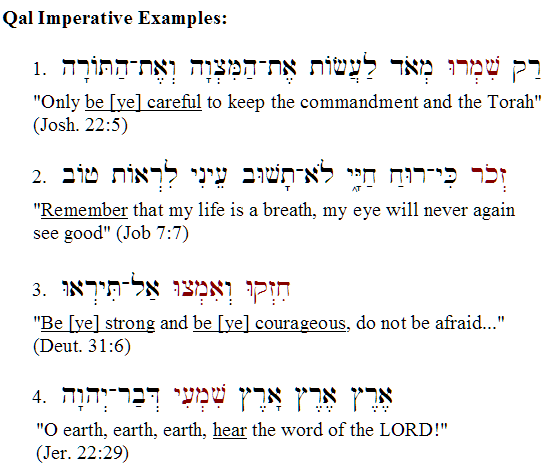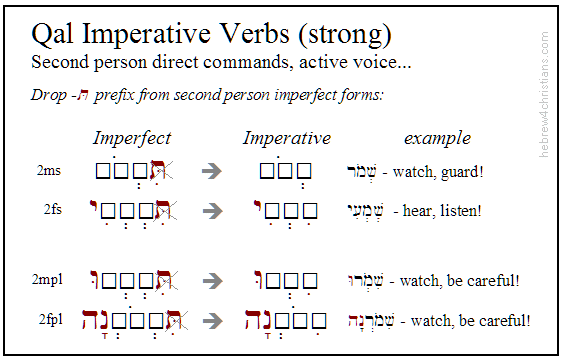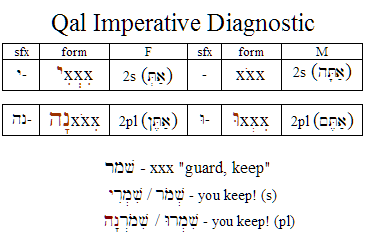|
The Qal Stem
The most basic stem from the verbal root is called the Pa'al (Χ€ΦΌΦΈΧ’Φ·Χ, based on the 3ms pattern) since it expresses the simple sense of the shoresh (e.g., "walk," "stand," "eat," and so on). Because it is the easiest and simplest form, it is called Qal (Χ§Φ·Χ), meaning "light" or "simple." In most Hebrew lexicons and dictionaries, verbs are listed in the 3rd person masculine singular of the Qal (when it exists).
General properties of the Qal stem include:
- Active Voice - the subject is agent of verb (e.g., "I guarded")
- Simple Aspect - the action of the verb is simple (i.e., not reflexive or causal). In the perfect tense, the action is completed or "perfected" (i.e., past), while in the imperfect tense, the action is ongoing or not completed (i.e., present or future).
The Qal Imperative
The Qal imperative form expresses commands directed to another person(s) and therefore it always is expressed in the second person singular or plural. Examples would be "Be strong" (spoken to an individual) or "Remember the LORD your God" (spoken to a group).
In general, the Qal imperative is formed by removing the prefixes from the second person Qal Imperfect forms:
The following "diagnostic" table further summarizes the pattern changes of a strong verb in the Qal Perfect conjugation:
Grammatical Notes:
- The Qal imperative is formed by removing the prefixes from the second person Qal Imperfect forms. For more information, click here.
- The letter Hey (Χ-) may be added as a suffix to the 2m singular form (e.g., Χ©ΧΦΈΧΦ°Χ¨ΦΈΧ).
- The particle Χ ΦΈΧ (which means "please") may follow an imperative (e.g., Χ©ΧΦ°ΧΦΉΧ¨ Χ ΦΈΧ).
- You simply must memorize this as a paradigm for the Qal Imperative. The endings (i.e., suffixes) are the same for all imperfect verbs.
- The normal word order in Hebrew is: verb - subject - object.
- Note the examples given below:
|





